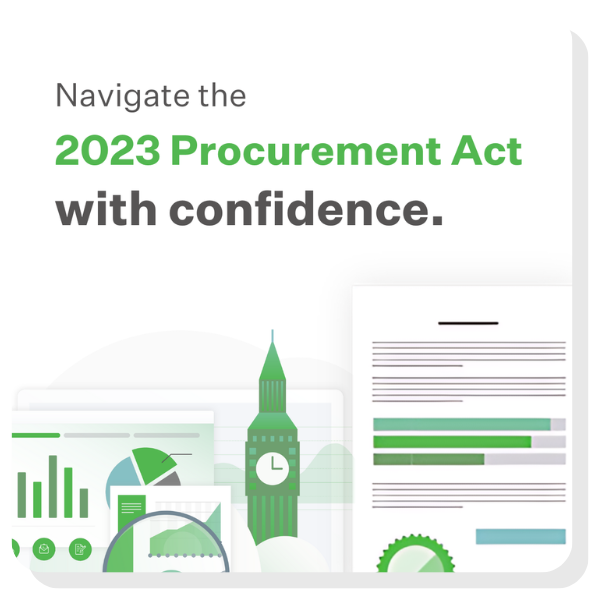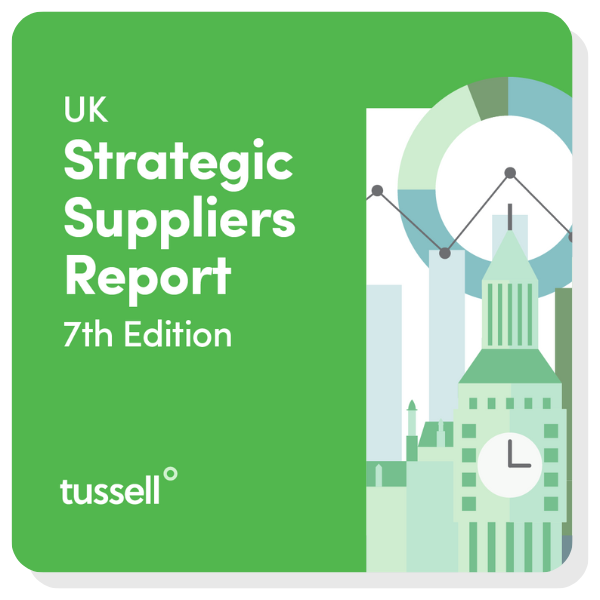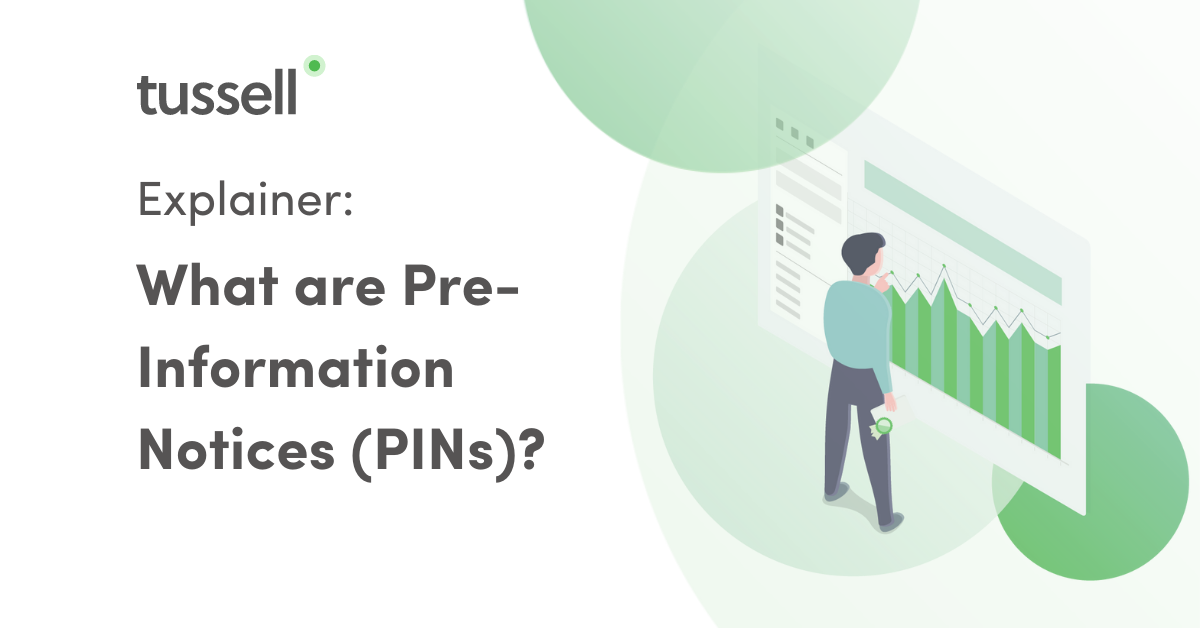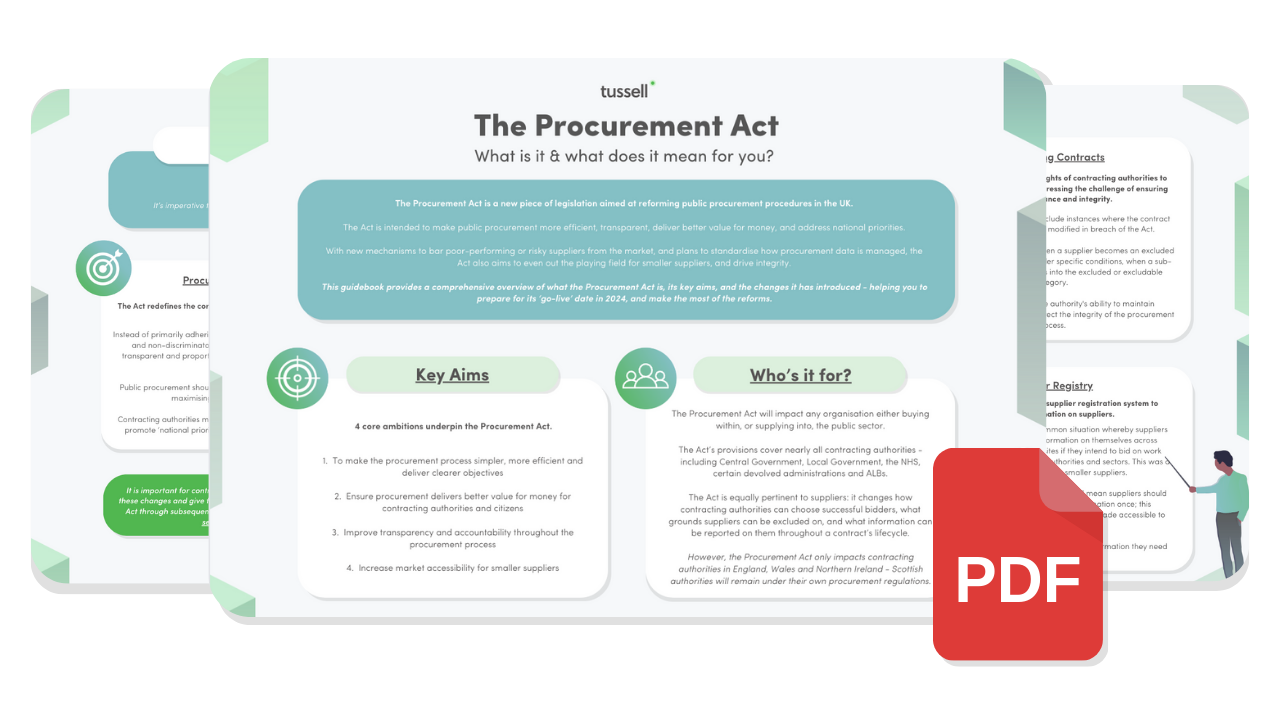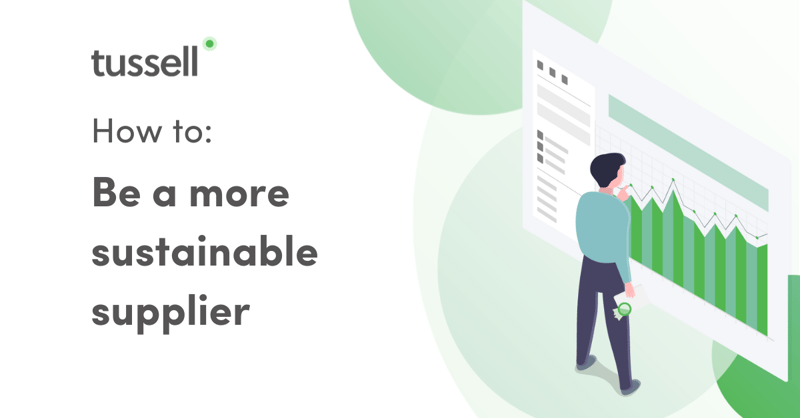This articles discusses Prior Information Notices (PINs), the significant impact they've had on public procurement and public sector contracts, and what business development professionals can do to maximise the opportunity for early engagement that PINs offer.
By James Tattersfield, MD of B2G research and strategic communications agency, Polar Insight, and Lloyd Johnson, Head of Marketing at Tussell and former procurement consultant.
Contents
- What are prior information notices?
- How have PINs changed public sector procurement?
- Benefits of early market engagement: for buyers
- Benefits of early market engagement: for suppliers
Prior Information Notices are set to be replaced by Preliminary Market Engagement Notices and Planned Procurement Notices on February 24th 2025.
Head to Tussell's Procurement Act Hub to learn about the upcoming changes to public procurement.
What are prior information notices?
Prior Information Notices (PINs) are public notices used by government buyers of complex products and services.
PINs signal to the wider market that the buyer has a specific upcoming commercial need that will require support from one of more external suppliers.
Sometimes known as an Early Market Engagement Notice or Future Opportunity Notice on Contracts Finder, PINs formally mark that a preliminary market consultation has begun.
They act as a formal opportunity for the buyer (or customer) and supplier to explain more about themselves and their respective organisations.
PINs also provide an opportunity for each party to provide different perspectives on the outcome they'd like to see as a result of the procurement, given their expertise in the area.
How have PINs changed public sector procurement?
With the introduction of the Procurement Contracts Regulations (PCR) in 2015, early market engagement is now specifically permitted in the legislation when using PINs. This means buyers can talk openly to suppliers about the procurement before the tender is released.
Prior to this point, many public sector procurement teams were somewhat nervous about conducting this type of pre-market engagement for fear of accusations of unfair bias in their procurement process.
However, as a result of the change in the law, there has been a significant impact on procurement behaviour (which we can see from the data below).
The scale and importance of this change (to mirror more closely normal behaviour in the private sector) is summed up by a Procurement Policy Note written by the Crown Commercial Service in 2016:
“Pre-procurement engagement with the market (including talking to potential suppliers) is now expressly permitted under procurement law. Engaging with the market before starting the formal procurement process is essential good practice and helps to maximise value for money and encourage appropriate innovation.”
Our data shows the public sector is using more PINs than ever to advertise public sector contract opportunities.
When looking at larger procurements from TED (or OJEU), it’s easy to see the impact the new regulations have had.
PINs represented just 14% of all notices in 2014 prior to their introduction, doubling to 28% for the first half of 2020.
The evidence speaks for itself: PINs are now used to formally start early engagement with the market in almost a third of public sector procurements.
As the current version of Contracts Finder was only launched in 2015, it's difficult to make a meaningful comparison, prior to the new regulations.
However, we can say this: PINs on the platform have increased by more than double, growing from 4% in 2015 to 9% in 2020.
Benefits of Prior Information Notices for buyers
The benefits of PINs for buyers are numerous. They include:
-
Ensuring suppliers are suitably prepared for a procurement process.
-
Providing a formal route for getting input from the supply market about the best way of meeting the organisation’s requirements.
-
Discovering new, and innovative solutions, to achieve better outcomes for citizens.
Using a PIN also provides some technical benefits to the buyer, such as reduced timeframes for the tender process.
Benefits of Prior Information Notices for suppliers
For suppliers, PINs present a powerful opportunity for the following.
-
To establish a deeper understanding of a buyer’s requirements and to signal the supplier's perspective on the, often complex, problem at hand.
-
To enable the widest selection of suppliers to engage in the process. It is common that events, webinars or ‘bilats’ (bilateral meetings - a diplomatic term to represent the meeting of two parties) are held. These give both sides a chance to meet, as well as time for the procurement process and buying motivation to be explained in detail.
Additionally (mostly on larger procurements), the Cabinet Office advises that piloting activity takes place before prior information notice.
In some cases, this may involve private sector involvement.
It presents an additional moment in the public procurement process, for suppliers to encourage innovation and/or demonstrate value for money.
How to maximise the opportunity of Early Market Engagement.
A formal Early Market Engagement process presents three main opportunities for suppliers:
1. Learn more about the goods, services or works being procured
From technical specifications to buying motivations to the policy objectives, suppliers should be using Early Market Engagement events to learn as much as possible about the buyer and their needs.
Buyers are expecting opinions to be voiced. They will often send out surveys and questionnaires to collect insights and ideas from suppliers.
Buyers want to know that what they are buying is available, will solve their challenge, and can be procured at the right time, for the right price.
Tips for success:
-
Carry out detailed desk-based research to understand what has been procured previously and how this may influence the current procurement (this can be done using Tussell Insight)
-
For political context and triangulation, try services like:
-
Hansard (https://hansard.parliament.uk/); and
-
GOV.UK’s Policy Papers & Consultations service (https://www.gov.uk/search/policy-papers-and-consultations).
2. Signal your understanding, capabilities or innovative approach
Early market engagement is your moment to make buyers aware of how you can help them (and the users of the service they are procuring) before the formal publication of an SQ or ITT.
Take this time to respond to queries and questionnaires, publish your perspectives and make yourself heard. In our experience, a well defined early market engagement strategy separates the most successful suppliers from the least.
Tips for success:
Allocate time in your sales discussions to ask yourself the following questions:
-
-
Who is involved and what is their relative influence on the procurement?
-
Do we know exactly (time/date) when their last interaction was with us (in-person, online etc.)?
-
What content do we have (or can we create) that will demonstrate our expertise to each stakeholder group?
-
If you're struggling, it may be worth looking to partner with a knowledgeable strategic communications agency, with public sector expertise.
3. Network with other suppliers
Prior Information Notices are the perfect opportunity to identify potential partners and service providers who could help bolster your chances of success.
If you know you don’t have all the capabilities required to submit a response, PINs are the perfect time to form consortiums, collaborative partnerships or joint ventures.
Going at it alone? Use the early engagement process to see who you're up against and begin crafting a strategy to reflect this.
In conclusion: be proactive, don't be a passenger
PINs and early market engagement look like they're here to stay. That's evident in the rhetoric from the public sector and it's firmly backed up by the data.
Companies who succeed in regularly winning public sector contracts will have a proactive approach to PINs and early market engagement. In short, this means going after the opportunity in a structured and comprehensive way.
Do not be a passenger in the early engagement process. Get on the front foot, be proactive and drive the agenda with your buyer.
If your intent is good - to help the buyer, knowing you can provide a service that provides better outcomes for citizens - then it's in everyone's interest that you grab these opportunities with both hands.
Good luck!




